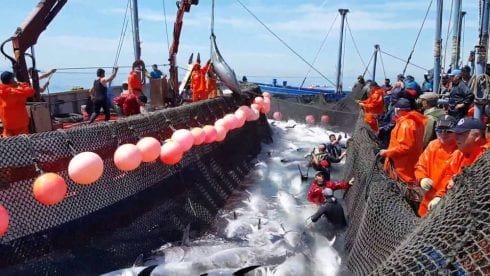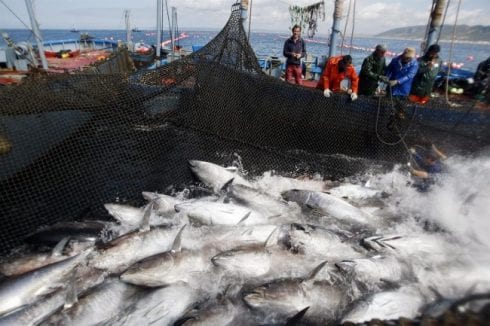TODAY is a very special day in Cadiz as fishermen celebrated the start of an ancient tradition – which happens to be the source of their livelihood.
These are not your average fishermen. They are divers who plunge into the ocean to spear eight-foot tuna in a 3,000-year-old Phoenician trap-fishing technique called La Almadraba.
Welcome to Barbate, the gritty Andalucian town which has put the delicacy of wild bluefin tuna on the global culinary map.
While this old fishing port won’t win many awards for its beauty, you can’t help but fall for the charm of the locals and the tastiest fish you will ever tuck into.
READ MORE: Defiant Spanish fishermen vow to keep trawling near the border with Gibraltar

The meat of the bluefin is known as atun rojo (red tuna) due to the deep crimson-coloured flesh which is tender and sweet, but dense like steak and melts in your mouth.
Locals usually eat it raw, prepared as a tartare, as its unique texture and full flavour is best appreciated without heat.
The Japanese, the world’s largest buyers of tuna, can’t get enough of it. Around 80% is exported to the Land of the Rising Sun – filleted, frozen and air-dried within hours of being caught, ready to turn into sushi and sashimi.
The most expensive part, the barriga (belly), will sell for at least €40 per kilo. Other cuts once manufactured can go for up to €90. Morillo, the top of the head, is almost impossible to get in Spain as almost all of it gets hoovered up by the Japanese.
Barbate comes alive in April/May as the Almadraba season begins, when locals spend a month paying homage to their blue-finned fish with Barbate Tuna Gastronomy Week as one of the highlights.
Its three sister towns which also operate Almadraba trap nets – Tarifa, Zahara de los Atunes and Conil – also celebrate the fish.
The fishermen set up a complicated labyrinth of nets which catch the tuna as they migrate from the Atlantic to warmer Mediterranean waters to spawn. Their fat reserves keep them warm through the winter meaning the fish are succulent and full-flavoured.

The fish swim through different compartments of the nets until they reach the final area, locked in by the fisherman’s boats which form a ring around the net.
Next comes the most dramatic and breathtaking part of the process, ‘la levanta’, in which the burly fishermen hoist up the net and select the biggest fish, with some weighing more than 500 kilos.
The Almadraba system – meaning ‘to strike’ in Arabic – has been praised for its sustainability as there is no overfishing with a strict quota that the fishermen cannot exceed.


